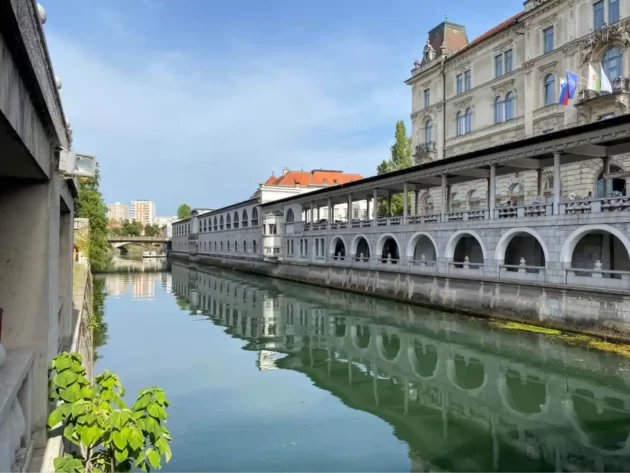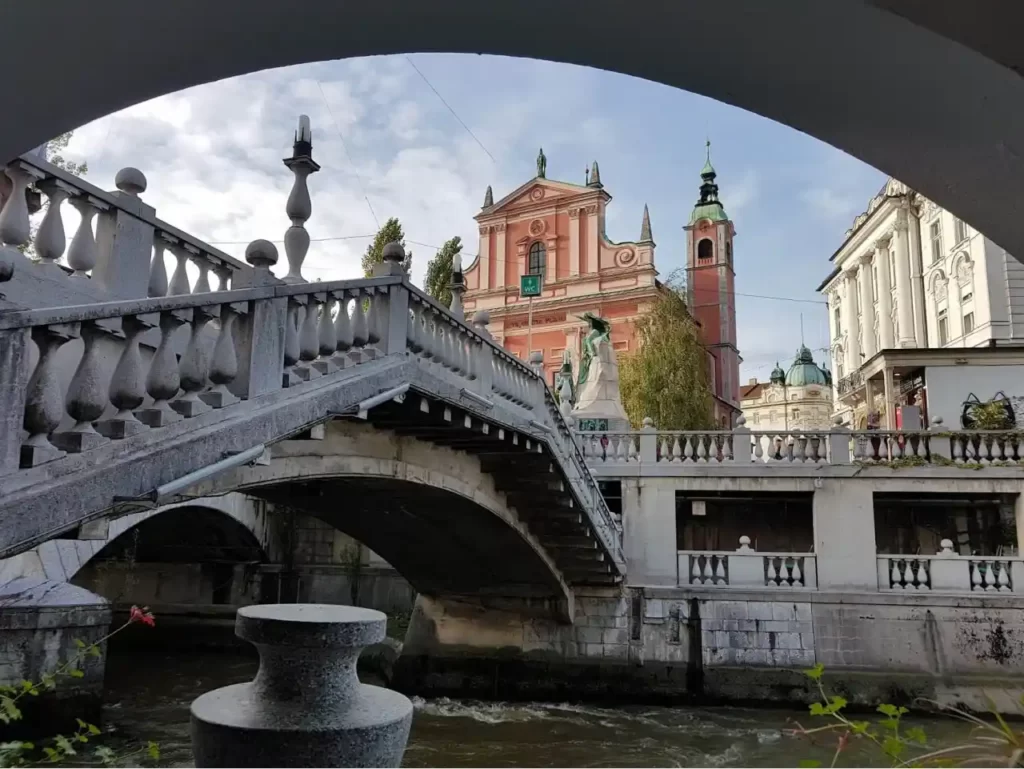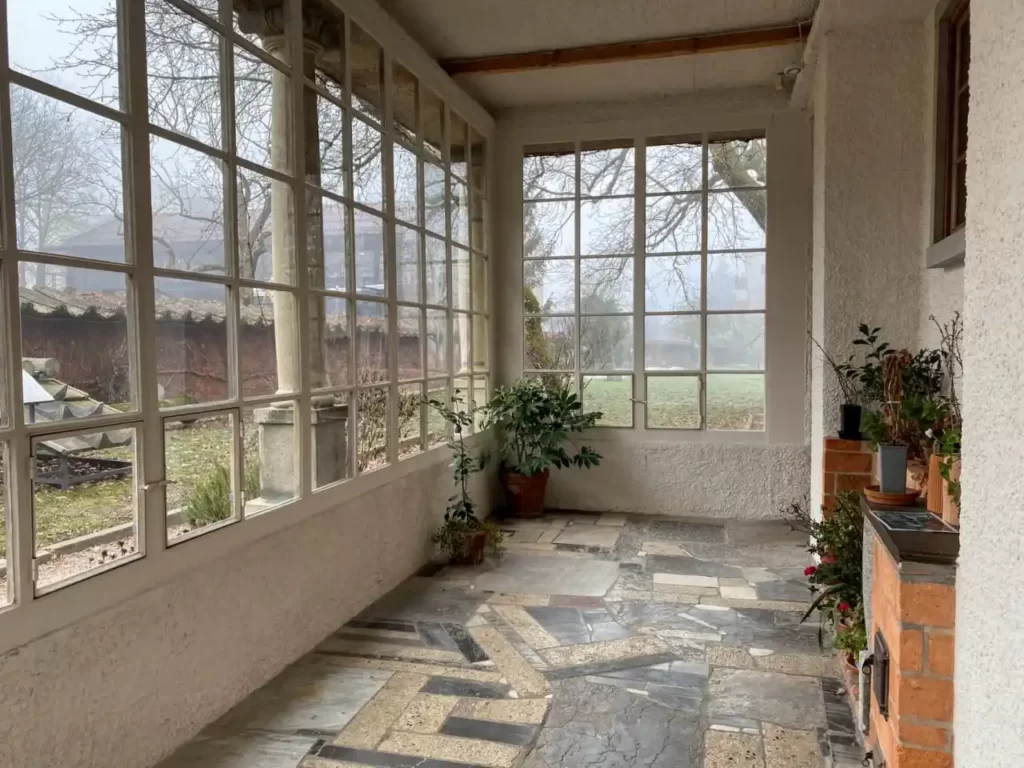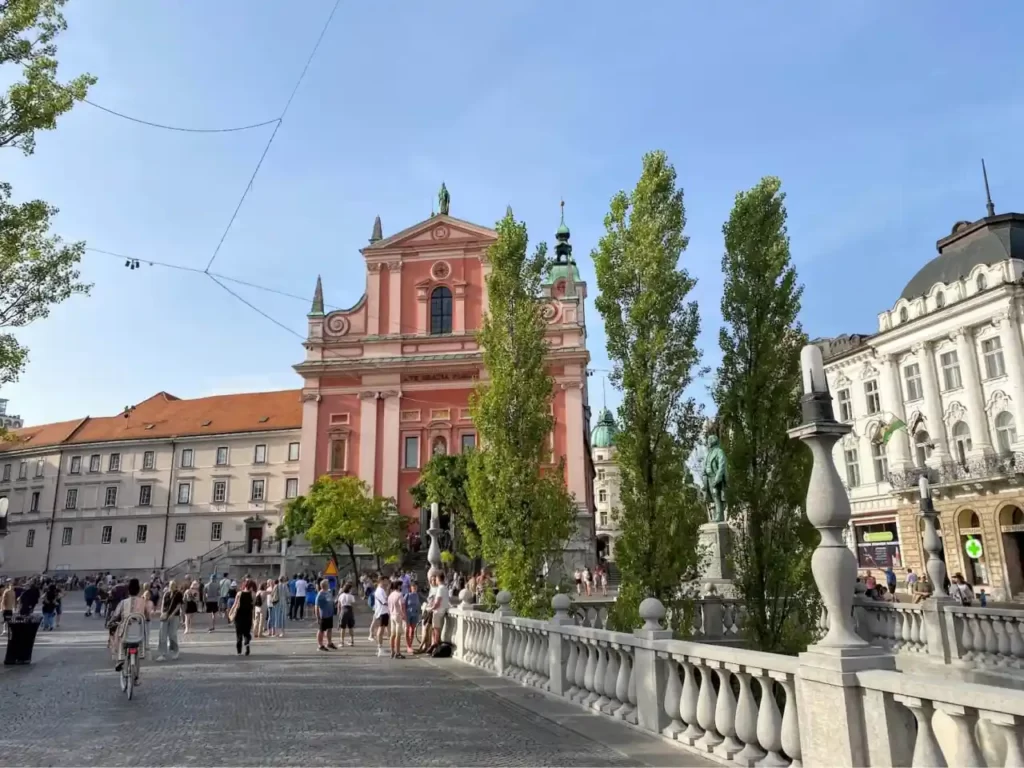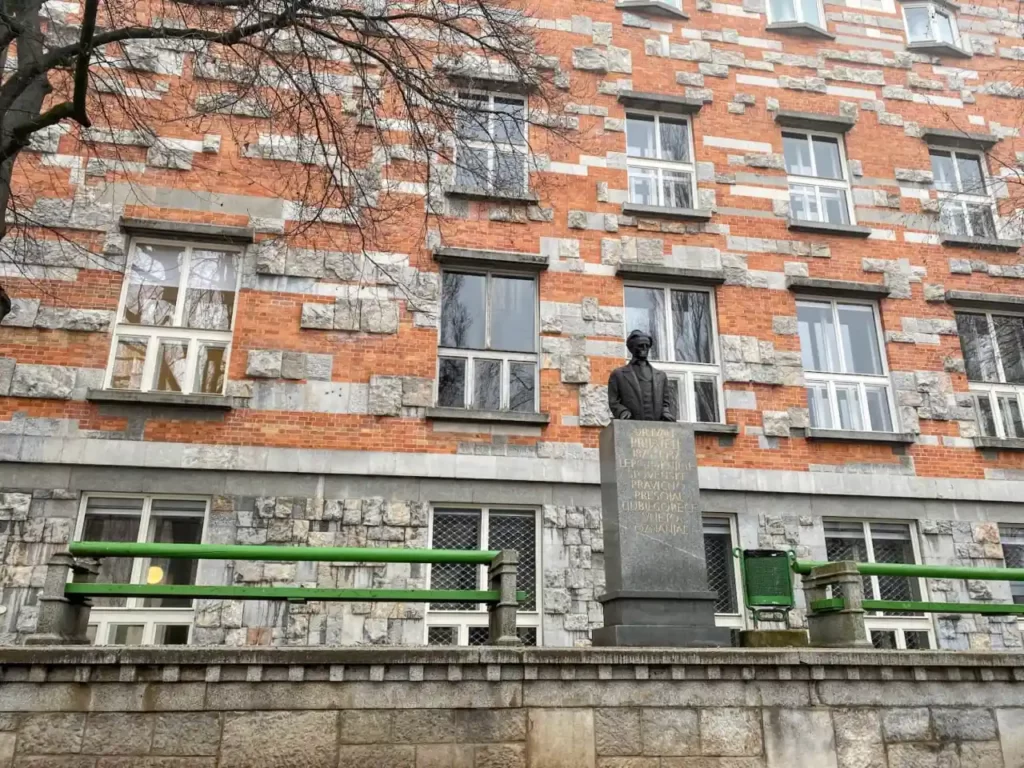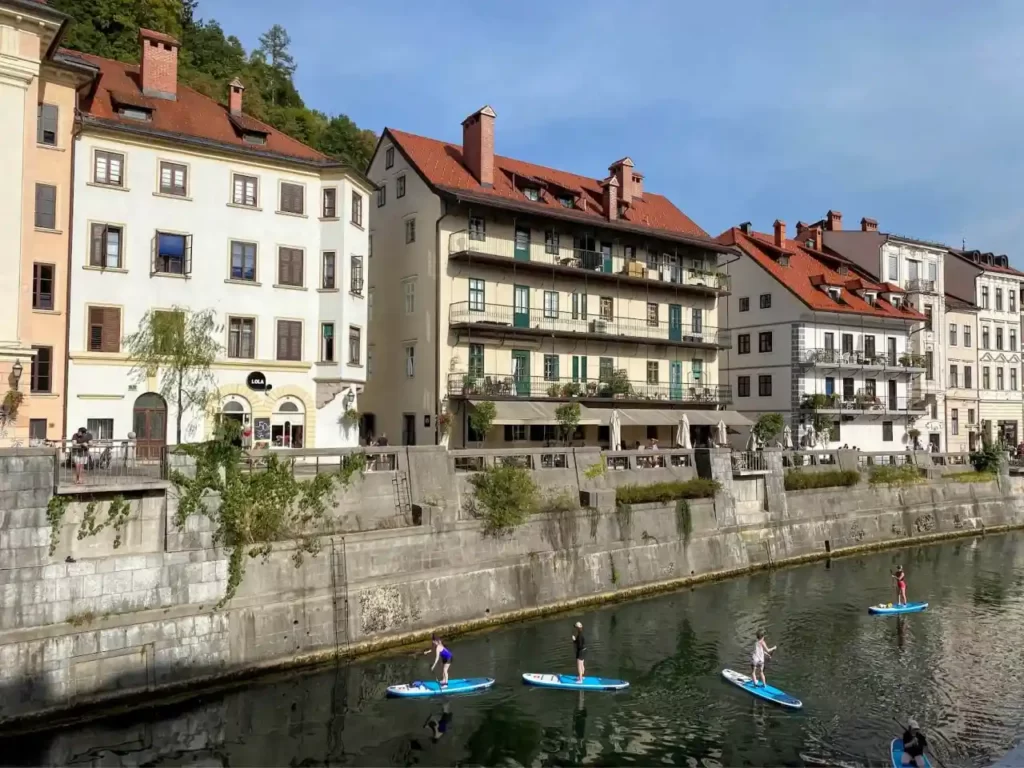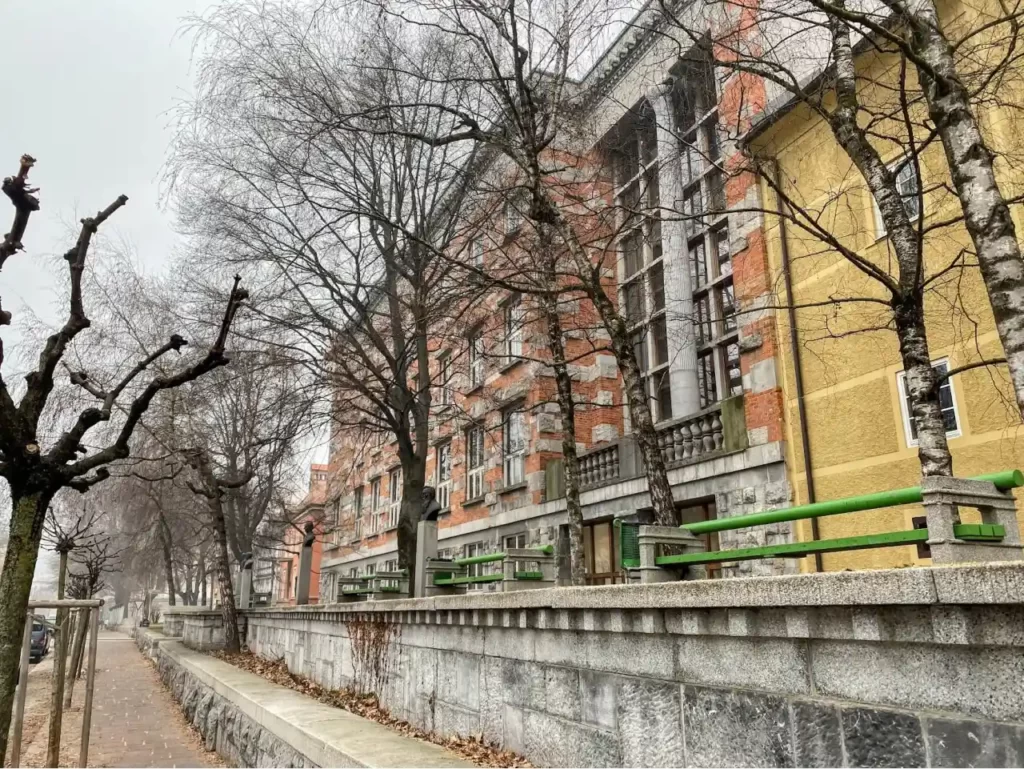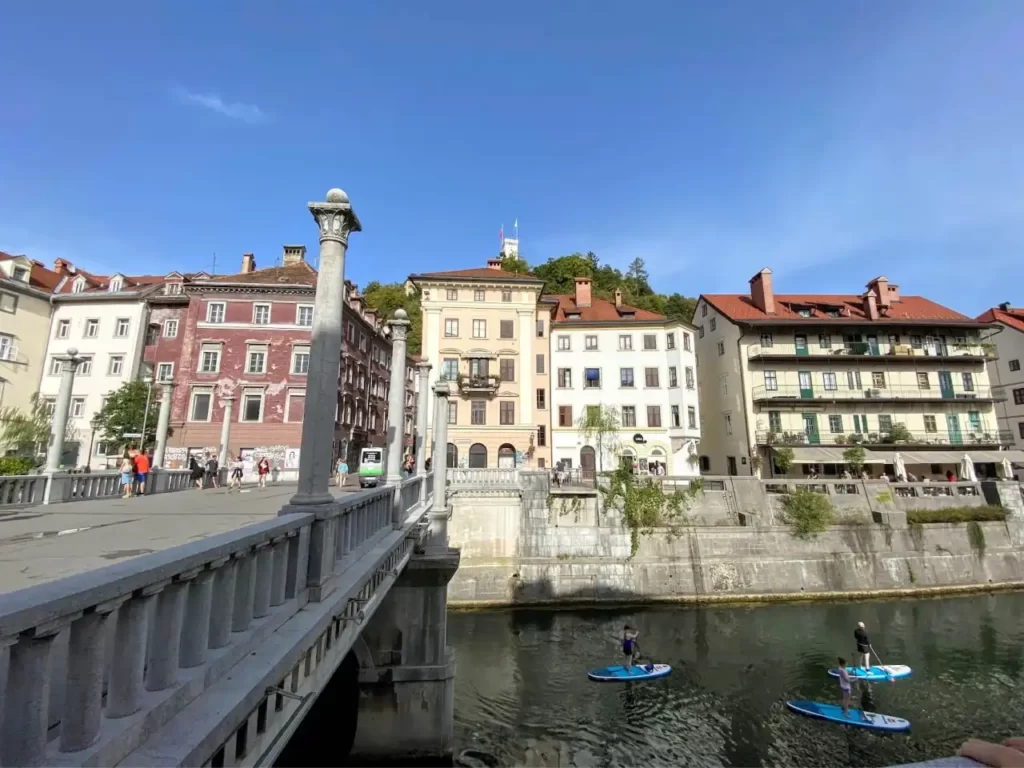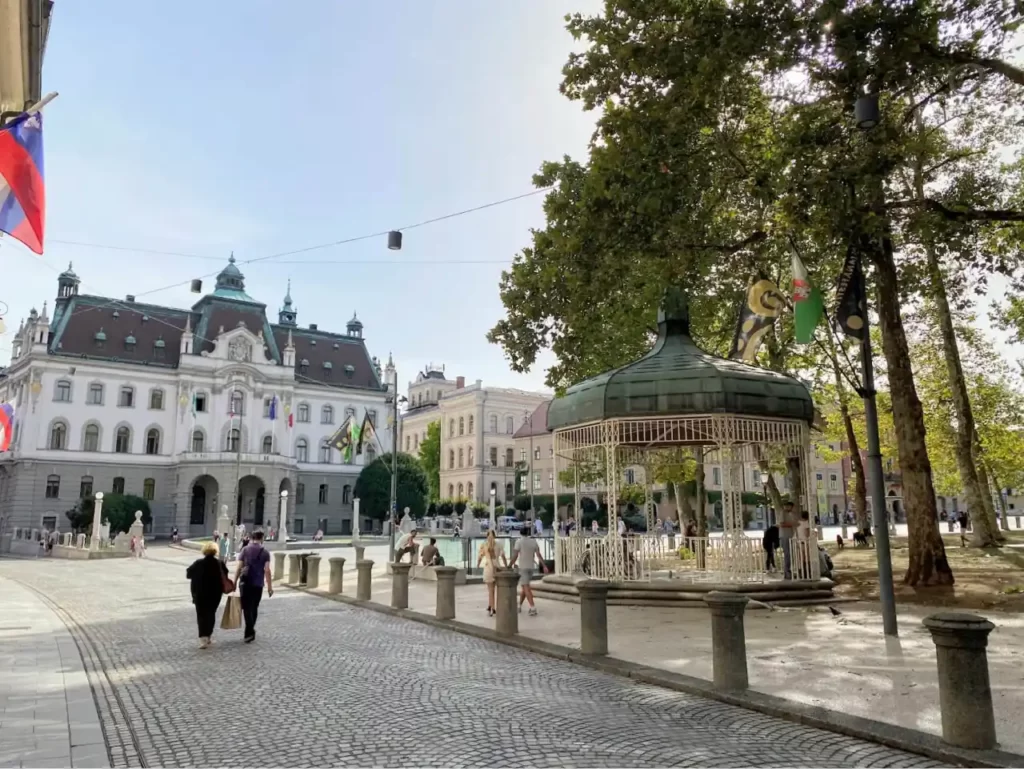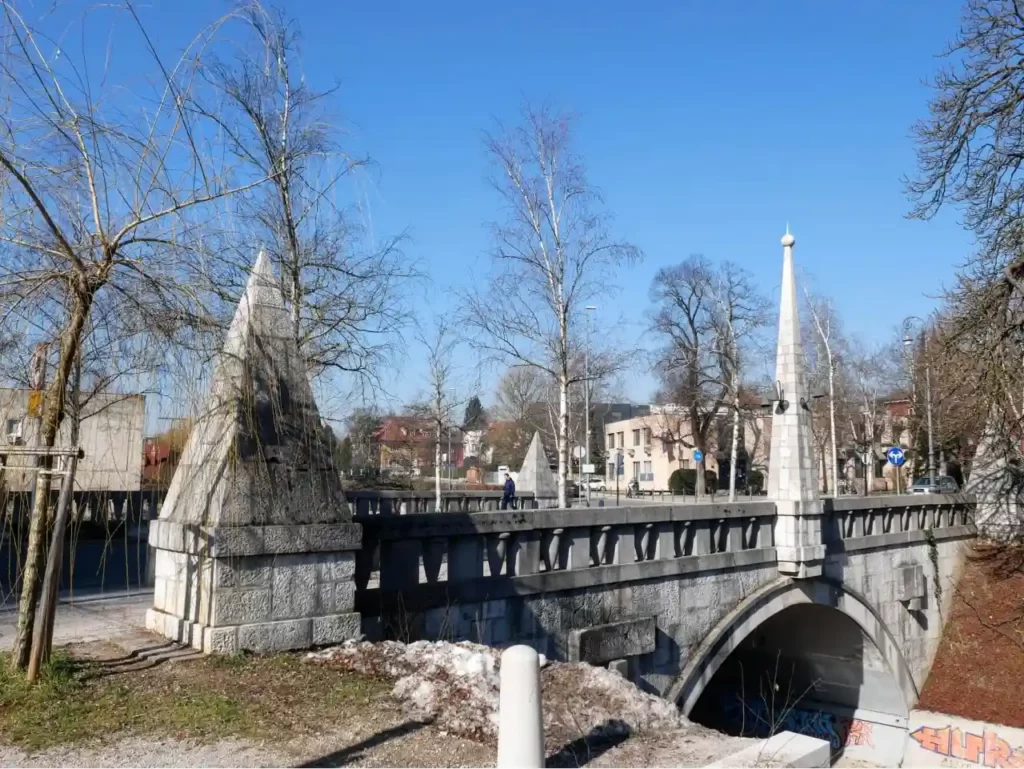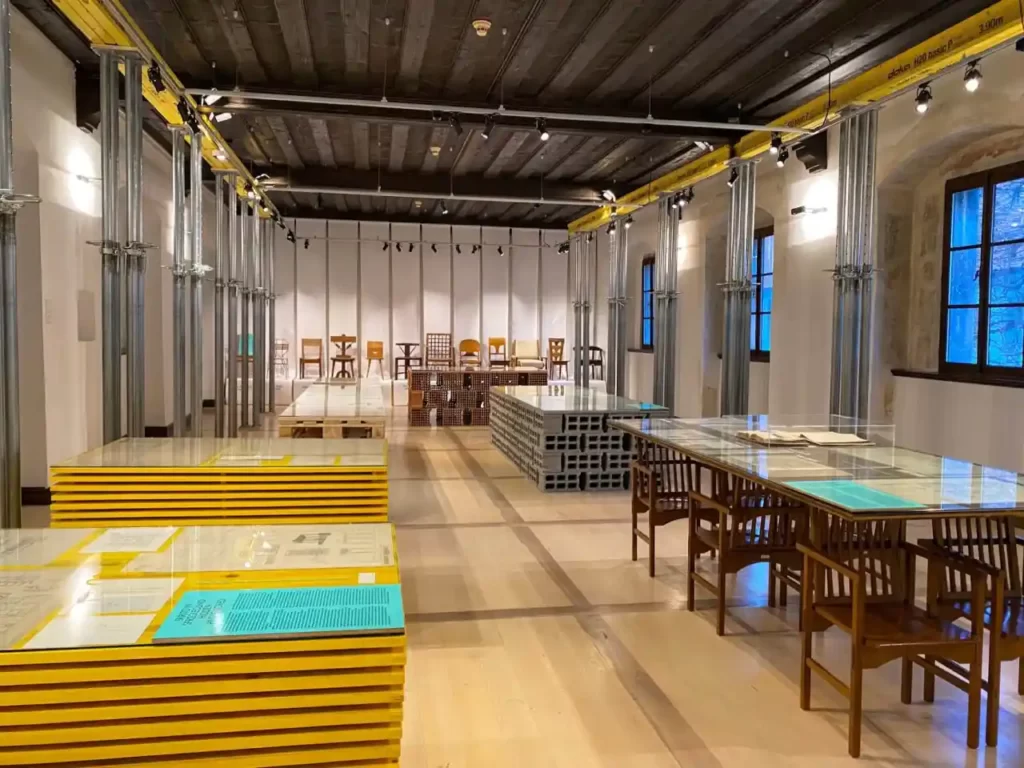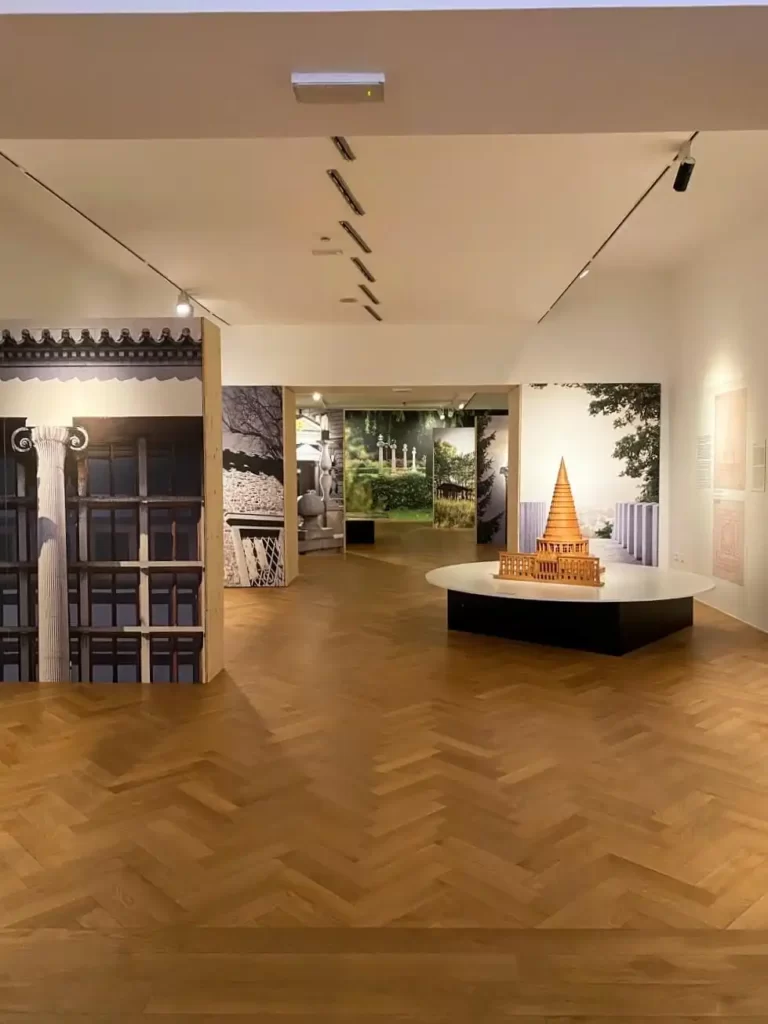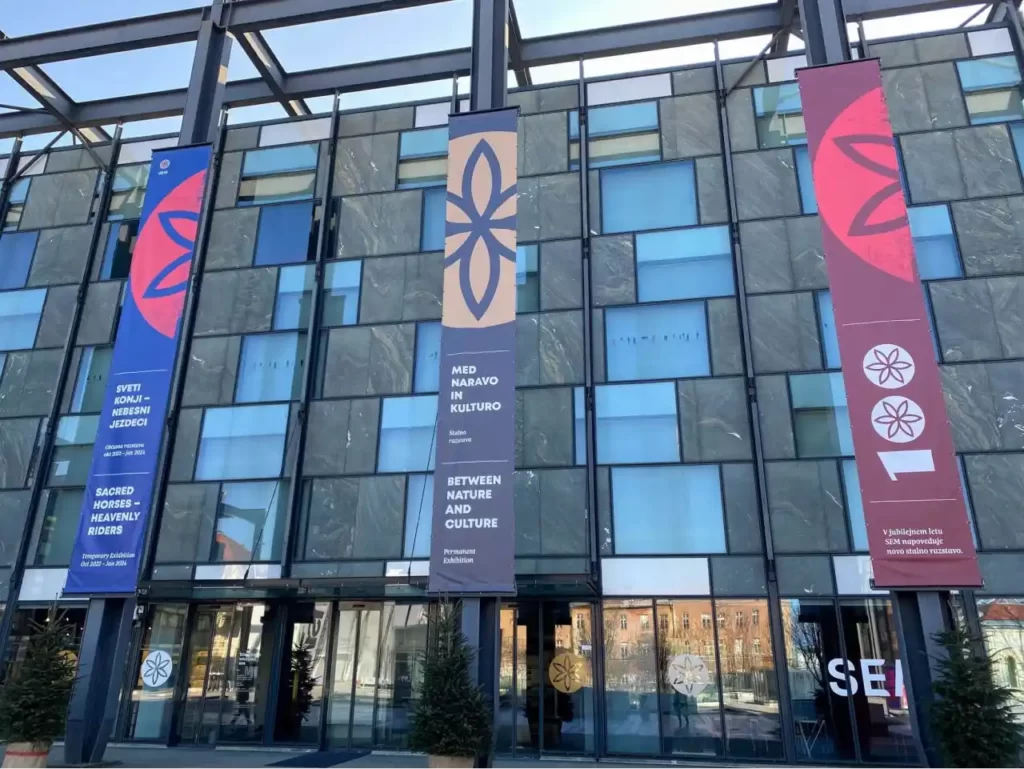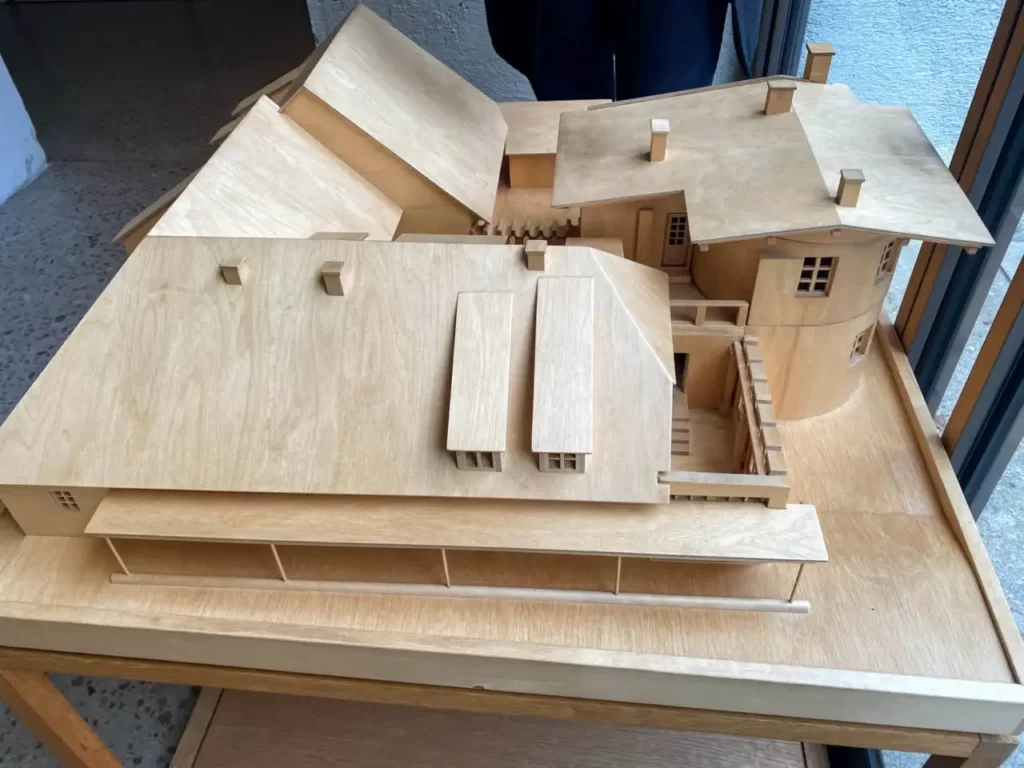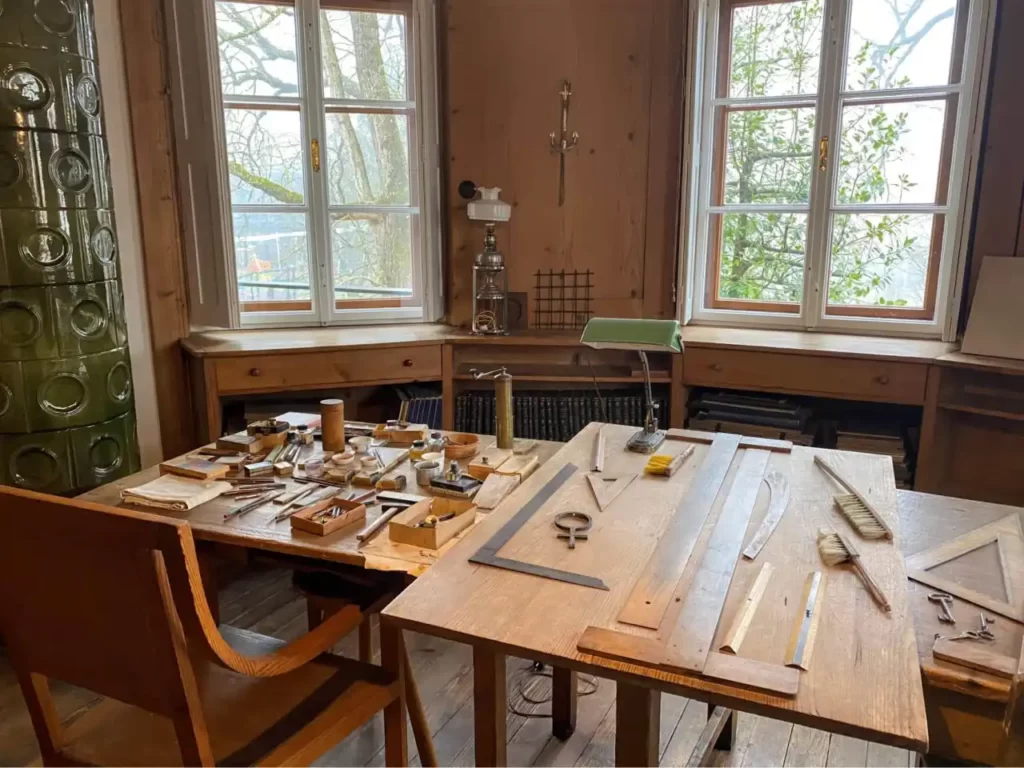When wandering around Ljubljana, you will stumble on some fascinating buildings designed by famous Slovene architect Jože Plečnik. He reshaped the Slovenian capital, built many beautiful buildings and made urban designs for the city, making Ljubljana one of the prettiest European capitals. It’s with no surprise Plečnik’s masterpieces in Ljubljana got to the UNESCO heritage list in 2021. Read this article to learn more about Jože Plečnik and his architecture in Ljubljana.
Jože Plečnik and his Architecture in Ljubljana
During my recent trip to Ljubljana, I aimed to learn more about one of the most famous Slovene architects, Jože Plečnik. 2022 was celebrated as the year of Plečnik, so many museums in Ljubljana organised special exhibitions about him. The new researches were done, special tours organised, and interpretations of his work published. I met with some of the researchers and curators who worked on exhibitions about his work. It was so interesting to learn about his personality and dedication to work. And to feel his presence at his former home that still looks as it did when he lived there.
Plečnik is still a bit of a mystical figure. Someone who was a genius but also a workaholic. He was a great university professor but also a tyrant in the amount of work he was asking from his students. A thoughtful friend but also a loner.
However, his work speaks for itself. On July 31st 2021, Jože Plečnik’s work in Ljubljana was inscribed on the UNESCO World Heritage List and got new recognition that way.
⤷ Read more: What to see & do in Ljubljana
Who was Jože Plečnik
But, who was Jože Plečnik?
Jože Plečnik was born and raised in Ljubljana. His father was a carpenter, so the plan for young Jože was to follow in his father’s footsteps. He continued his education in Graz, studying interior design and artistic carpentry. After that, he went to Vienna, where he studied architecture in a class of one of the most famous architects of that time, Otto Wagner.
When finishing university, he was awarded the Rome scholarship. It led him to the seven-month trip to Italy and France, where he visited Rome, Florence, Venice and Paris. The architecture he saw there significantly influenced his later work. Although his early buildings could be classified as a part of the Art Nouveau movement, he was strongly influenced by classical art and architecture. So, in his later work, he was much more of a classicist who developed his unique style.
Plečnik’s focus was always on public space. We could consider him an urban designer even more than an architect. He incorporated nature into his urban designs in a way that makes them an example of the human-centred public space.
After living and working in Vienna and Prague, in 1921, when he was almost fifty, he moved back to Ljubljana, where he became an architecture professor at the newly established University of Ljubljana.
⤷ Read more: Discover the best museums in Ljubljana
10 Masterpieces by Jože Plečnik you shouldn’t miss in Ljubljana
When Plečnik moved back to his home town and started teaching at the University of Ljubljana, he also started urban planning for rebuilding the city. And he was extraordinarily imaginative in doing that. He transformed a small provincial town into the country’s capital in only a few decades.
His urban designs are probably even more interesting than Plečnik’s architecture in Ljubljana. He had a particular talent for urban design, and they are among the most interesting Plečnik’s cultural heritage in Ljubljana. He wasn’t doing that with architecture only but also with trees and nature. Plečnik also loved reusing older architecture or parts of other buildings. In that sense, he was pretty modern, and we consider him one of the first sustainable architects.
If you’d like to learn more about him, here are ten masterpieces by Jože Plečnik you shouldn’t miss in Ljubljana.
1 – Plečnik’s House
Address: 4 – 6 Karunova Street, Ljubljana
When he moved to Ljubljana in 1921, Jože Plečnik redesigned the house his brother had bought a few years before. The idea was to create a family home for himself, his sister and his brothers. However, in the end, only Jože Plečnik lived in it. The house has quite a unique design, with the central cylindric-shaped edifice creating a large round-shaped room on each floor. He also designed the furniture inside the house.
The house is turned into a museum today with an interior that looks as it did when Plečnik lived in it. It’s pretty interesting to see its design. For example, his office was also a bedroom, showing his dedication to work. It was also fascinating to see the chair in the kitchen for reading the morning newspaper and drinking coffee. Plečnik designed a house that was more of a hybrid between the monk cell and an office than a home.
⤷ TIP: Plečnik House can be visited only during the organised guided tour. They are scheduled every hour between 10 am and 5 pm and can accommodate a maximum of seven people. Reserve your spot in advance if you visit it during the high season.
2 – Triple Bridge
Address: Adamič-Lundrovo nabrežje 1, Ljubljana
The Triple Bridge (Tromostovlje in Slovenian) exemplifies Plečnik’s way of reusing older architecture in his work. At the end of the 1920s, it became apparent that the old bridge built by Giovanni Picco in 1842 wasn’t sufficient enough for the growing city. So, they hired Jože Plečnik to construct the new bridge. However, he decided to use the existing one and add two smaller pedestrian bridges on its sides. To unify them, he designed the same balustrade on all those bridges.
The two additional bridges are separate from the central one. Plečnik built them in a shape of a funnel, making an emphasised approach to Prešern Square.
3 – National and University Library in Ljubljana
Address: Turjaška ulica 1, Ljubljana
One of the most fascinating buildings designed by Jože Plečnik in Ljubljana is the National and University Library. He built it as a symbol of learning and knowledge. Inspired by the Italian Renaissance palaces, the building has intriguing symbolism. Plečnik used some of the old stones from the building that stood in its place before and even some from Ljubljana’s predecessor, the Roman town of Emona. In its interior, the dark monumental staircase leads into the light reading room, symbolising the enlightening with knowledge.
4 – Ljubljana Central Market
Address: Adamič-Lundrovo nabrežje 6, Ljubljana
The Central Market, designed by Jože Plečnik in Ljubljana, is one of the most beautiful markets I’ve ever seen. It’s located next to the Ljubljanica River and has an open and closed area. It spans ample space between the Triple Bridge and Dragon Bridge. Again inspired by classical architecture, the main building located at the embankment of the Ljubljanica River shows the Venetian Renaissance influence.
⤷ TIP: The market is open daily and is a great place to purchase excellent local food and produce.
5 – Embankments on Ljubljanica River
Address: Alongside Ljubljanica River
Although his original idea was to close the river completely, later on, Plečnik decided to create embankments and bridges and control the river that way. He reinforced the river banks with stone and created small stone terraces next to them. In his fashion of creating urban design with nature, he planted weeping willows alongside the river, making a new green promenade through the city centre.
To control the river’s water level, Plečnik also built a sluice gate with an ornamentation inspired by Egyptian, Greek and Etruscan art.
6 – Vegova Street
Address: Vegova ulica, Ljubljana
Created between 1929 and 1937, Jože Plečnik designed Vegova Street as a sort of cultural promenade in the city centre of Ljubljana. He made an urban area consisting of trees and architectural elements between the National and University Library and Congress Square. He used the old medieval moats remains as the elevation for the benches. And along the street, he placed many columns with busts of famous musicians and linguists.
7 – Žale Cemetery
Address: Na Žalah 5, Ljubljana
When I first saw a model of the Žale Cemetery designed by Jože Plečnik in Ljubljana, it reminded me of the Greek Acropolis. During the 1940s, he designed several funeral chapels for the new municipal Ljubljana cemetery, each inspired by a different classical architecture. The entrance to the graveyard is through the monumental arch with a massive colonnade that symbolically marks the border between the world of living and dead.
⤷ TIP: Each first Saturday of the month (March to October) at 10 am a guided tour of Plečnik’s architecture at Žale Cemetery is organised. For more info and to book the tour, contact Visit Ljubljana through this link.
8 – Cobbler’s Bridge
Address: Šuštarski most, Ljubljana
As you can already notice, Jože Plečnik designed a few bridges in Ljubljana. One of the most elegant among them is the Cobbler’s Bridge. Built between 1931 and 1932, it’s home to one of Plečnik’s favourite architectural elements – a pilar. He used two types of columns to decorate the bridge – Corinthian and Ionian. The result is an elegant bridge resembling the classical square on the water.
9 – Congress Square in Ljubljana
Address: Kongresni trg, Ljubljana
Plečnik was a talented urban designer, which is especially visible in how he designed public spaces. Congress Square in Ljubljana was built on the old moat running next to the old Roman and medieval fortifications. While reshaping it into a modern urban area, he used concrete to create a geometrical raster. He used the line of lamps to connect the two most important buildings on the square, the Ursuline Church and the Slovenian Philharmonic building. With all this work, Plečnik created an open liveable space for the citizens of Ljubljana to socialise, relax and enjoy.
10 – Trnovo Bridge
Address: Karunova ulica 1, Ljubljana
Built just a stone throw away from his house, Trnovo Bridge was constructed between 1929 and 1931. It was a part of Plečnik’s Gradaščica channel embankment project. It’s also located in front of the Trnovo Church, so in its design, Plečnik repeated some of the architectural elements from the church, like the pyramids.
The bridge is also interesting because Plečnik planted trees on it, again creating a perfect symbiosis between nature and architecture.
⤷ Read more: Ljubljana LUV Fest – Celebrating Love, Art & Wandering in Ljubljana
Exhibitions about Plečnik in Ljubljana in 2023
If you’d like to learn more about Jože Plečnik’s architecture in Ljubljana, then you should visit some of the special exhibitions organised about his work in some of the Ljubljana museums.
UNIVERSUM PLEČNIK: Between Workshop and Myth
Museum of architecture and design / Open until May 21st 2023
The exhibition at the Museum of architecture and design explores Jože Plečnik’s legacy and some topics that haven’t gotten deserved attention yet.
Plečnik: The Metropolis, Place, Garden
City Museum of Ljubljana / Open until August 27th 2023
At the exhibition, you can see some of Plečnik’s architectural drawings for projects that were and weren’t made in the end, his notes, sketches, models and statues, some of which are presented to the general public for the first time.
Plečnik’s Lectarija
Slovene Ethnographic Museum / Permanent exhibition
Lectarija was a small arts and crafts shop that opened on Ljubljana’s Congress Square in 1940. The interior design was created by Jože Plečnik. You can see what it looked like and what products were sold at this exhibition.
Plečnik House Exhibitions
Plečnik House / Permanent & temporary exhibitions
Plečnik House is the first stop for anyone interested in learning about Jože Plečnik architecture in Ljubljana. Besides its temporary exhibition, they regularly host special shows to help you understand this fascinating architect.
Jože Plečnik’s architecture in Ljubljana is definitely something to explore while visiting that city. From his urban design and buildings in the town to some fantastic exhibitions about him, I’m sure you’ll enjoy exploring Jože Plečnik’s heritage in Ljubljana.
I visited Ljubljana and Jože Plečnik architecture in Ljubljana during the press trip organised by Ljubljana Tourism. Many thanks to them and their partners for organising such a wonderful trip for me. However, as always, all opinions are my own.

